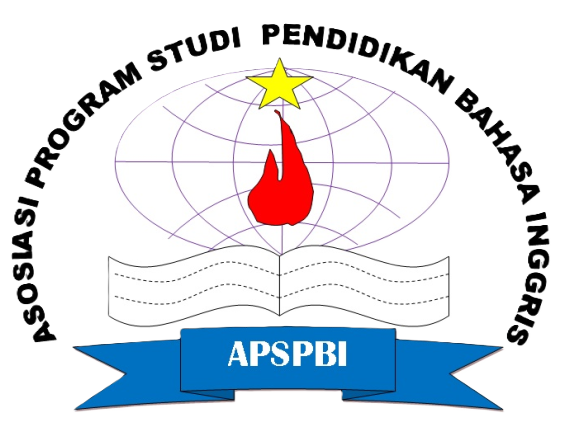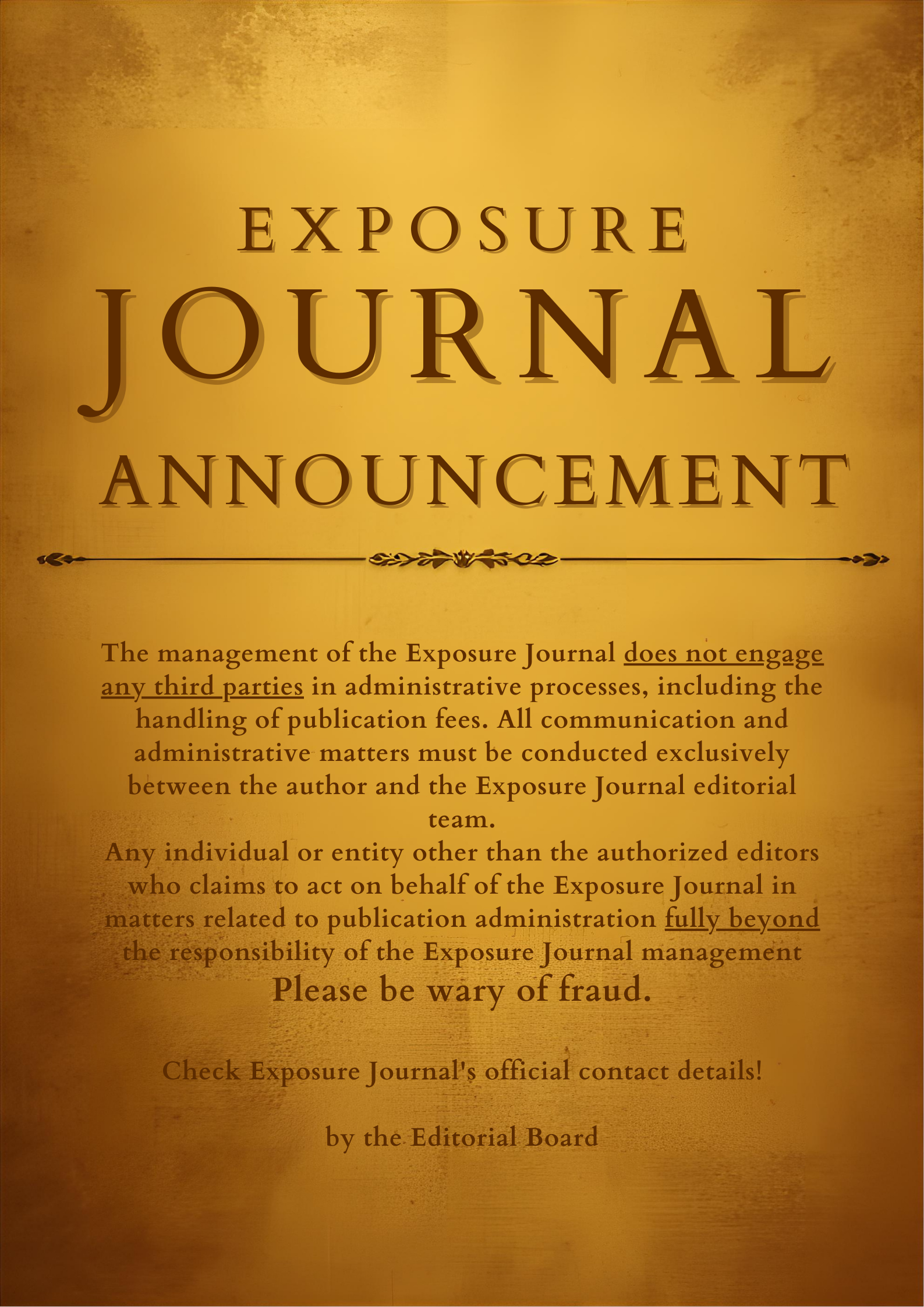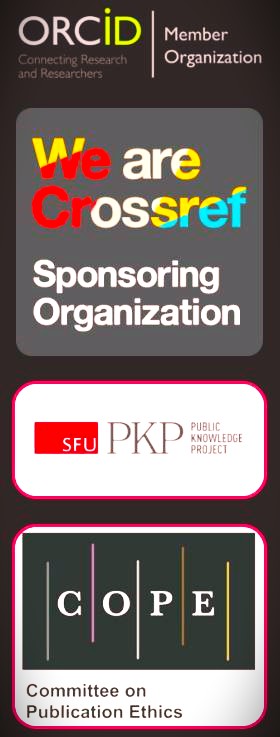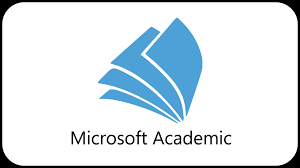TEACHERS' BELIEFS ON MULTIPLE INTELLIGENCE BASED ENGLISH TEACHING FOR YOUNG LEARNERS
DOI: https://doi.org/10.26618/exposure.v8i1.2051
teachers' beliefs, multiple-intelligences, English teaching for young learners
Abstract
Multiple intelligences theory asserted that human intelligence is not only measured by standardized IQ test on verbal and mathematical ability. However, this theory assumed that human intelligences contains of nine types of intelligences showed by each individual. By recognizing the different type of intelligences, it will help to know the different style of learners. Starting from this point, many teachers who understand the differences in learning among the students, they started to implement this theory for their instruction in order to improve the quality of teaching. This study was aimed to explore the teachers’ beliefs about the use of multiple intelligences based English teaching for young learners. The researcher used descriptive qualitative design to explore the teachers’ beliefs on the use of multiple-intelligences based English teaching for EFL young learners. This study was conducted in one of the elementary schools in Surakarta, which implemented multiple intelligences theory as a system in their instruction process. Two teachers were chosen to participate in this study and data was collected through the interview. The finding revealed that teachers’ beliefs on multiple intelligences theory based English teaching for young learners are a best strategy to be implemented in current teaching and learning process at their school. They believed that multiple intelligences system enhance the students’ achievement. They also realized the importance of the multiple intelligences theory based English teaching to improve their instruction.
References
Armstrong, T. (2009). Multiple Intelligences in the Classroom (3rd Ed). Virginia, USA: ASCD (Association for Supervision and Curriculum Development).
Ary, D., et al. (2010). Introduction to Research in Education (4th ed.). Belmont: Wadsworth Cengage Learning.
Bingimlas, K. & Hanrahan, M. (2010). The Relationship between Teachers’ Beliefs and Their Practice: How the Literature Can Inform Science Education Reformers and Researchers. In M.F. Tasar & G. Gakamkci (Eds.). Contemporary Science Education Research: International Perspectives (pp. 415-422). Ankara, Turkey: Pegem Akademi.
Borg, S. & Al-Busaidi, S. (2012). Teachers’ Beliefs and Practice Regarding Learning Autonomy. ELT Journal Vol. 66, 283-292.
Bedir, H. (2010). Teachers’ Beliefs on Strategies Based Instruction in EFL Classes of Young Learners. Procedia-Social and Behavioral Sciences, 2 (2), pages 5208-5211. doi: 10.1016/j.sbspro.2010.03.847
Cameron, L. (2001). Teaching Languages to Young Learners. Cambridge: Cambridge University Press.
Canh, L. & Barnard, R. 2009. A Survey of Vietnamese EAP Teacher’s Beliefs about Grammar Teaching. In Zhang, L.J., & Rubdy, R.,
Alsagoff, L. (eds.). 2009. Englishes and Literatures in English in a Globalised World: Proceedings of the 13th International Conference on English in Southeast Asia, 246-259. Singapore: National Institute of Education, Nanyang Technological University.
Chatib, M. (2013). Sekolahnya Manusia. Bandung: Kaifa
Dolati, Z., & Tahriri, A. (2017) EFL Teachers’ Multiple Intelligences and Their Classroom Practice. SAGE. 2017 (1-12) Doi: 10.1177/2158244017722582
Dolati, Z., Tahriri, A., & Danaye, T. (2016). EFL Teacher’s Practice of Multiple Intelligences and the Role of Their Teaching Experience. International Journal for Teachers of English, 20, 90-115.
Fauziati, E. (2015). Teaching English as A Foreign Language: Principle and Practice. Surakarta: Era Pustaka Utama.
Fleetham, M. (2006). Multiple Intelligences in Practice: Enhancing Self-Esteem and Learning in the Classroom. Stafford, UK: Network Continuum Education.
Freeman, D., & Richards, J. C (Eds.). (1996). Teacher Learning in Language Teaching. Cambridge: Cambridge University Press.
Gardner, H. (1999). Intelligence Reframed: Multiple Intelligences for the 21st Century. New York, NY: Basic Books.
Harmer, J. (2007). The Practice of English Language Teaching (4th ed). Essex, UK: Pearson Education.
Hoerr, T. R. (2000). Becoming A Multiple Intelligences School. Virginia, USA: ASCD (Association for Supervision and Curriculum Development).
Hofer, B.K and Pintrich, P.R. 1997. The development of Epistemological Theories: Beliefs about Knowledge and Knowing and their relation to learning. Review of Educational Research 67 (1), 88-140.
Linse, C. T. (2005). Practical English Language Teaching: Young Lerners. New York: McGraw-Hill Companies, Inc.
Nicholson, K. & Nelson. (1998). Developing Students’ Multiple Intelligences. New York: Scholastic Proffesional Books.
Pritchard, Alan. (2009). Ways of Learning-learning theories and learning styles in the classroom. Oxon: Routledge
Sabiq. R.A. 2013. Teachers’ Beliefs and Practices in Teaching Grammar. Unpublished Thesis. UNS Solo.
Shearer, B. (2018). Multiple Intelligences in Teaching and Education: Lessons Learned from Neuroscience. Journal of Intelligence. Doi: 10.3390/jintelligence6030038
Woods, D., (1996). Teacher Cognition in Language Teaching: Beliefs, Decision-making and Classroom Practice. Cambridge: Cambridge University Press
Downloads
Additional Files
Published
How to Cite
Issue
Section
License
Authors who publish with this journal agree to the following terms:
In order to assure the highest standards for published articles, a peer review policy is applied. In pursue of the compliance with academic standards, all parties involved in the publishing process (the authors, the editors and the editorial board and the reviewers) agree to meet the responsibilities stated below in accordance to the Journal publication ethics and malpractice statement.
Duties of Authors:
- The author(s) warrant that the submitted article is an original work, which has not been previously published, and that they have obtained an agreement from any co-author(s) prior to the manuscript’s submission;
- The author(s) should not submit articles describing essentially the same research to more than one journal;
- The authors(s) make certain that the manuscript meets the terms of the Manuscript Submission Guideline regarding appropriate academic citation and that no copyright infringement occurs;
- The authors(s) should inform the editors about any conflict of interests and report any errors they subsequently, discover in their manuscript.
Duties of Editors and the Editorial Board:
- The editors, together with the editorial board, are responsible for deciding upon the publication or rejection of the submitted manuscripts based only on their originality, significance, and relevance to the domains of the journal;
- The editors evaluate the manuscripts compliance with academic criteria, the domains of the journal and the guidelines;
- The editors must at all times respect the confidentiality of any information pertaining to the submitted manuscripts;
- The editors assign the review of each manuscript to two reviewers chosen according to their domains of expertise. The editors must take into account any conflict of interest reported by the authors and the reviewers.
- The editors must ensure that the comments and recommendations of the reviewers are sent to the author(s) in due time and that the manuscripts are returned to the editors, who take the final decision to publish them or not.
Authors are permitted and encouraged to post online a pre-publication manuscript (but not the Publisher’s final formatted PDF version of the Work) in institutional repositories or on their Websites prior to and during the submission process, as it can lead to productive exchanges, as well as earlier and greater citation of published work (see The Effect of Open Access). Any such posting made before acceptance and publication of the Work shall be updated upon publication to include a reference to the Publisher-assigned DOI (Digital Object Identifier) and a link to the online abstract for the final published Work in the Journal.














